Keywords
Publication; Trends; Plastic surgery
Introduction
The internationalization of research—and consequently literature—as well as the improvement of the level of research and evidence-based manuscripts are currently major topics of discussion. As globalization and worldwide economic development progress, the boundaries that previously prevented the exchange of goods, services, and information have blurred. Large-scale projects and innovations requiring international collaboration, such as the Human Genome, place heavy emphasis on the globalization of medical research [1]. Plastic surgery research reflects this general change with an increasing number of articles originating outside of North America and Europe. Recently published articles reviewing trends in the contributions to the plastic surgery literature have demonstrated growth in countries such as China and India [2-4]. In this study, we analyzed article and contribution trends occurring over the last ten years in five highest impact factor (IF) plastic surgery journals: Plastic and Reconstructive Surgery (PRS, IF=3.383), British Journal of Plastic Surgery (BJPS) which transitioned to Journal of Plastic, Reconstructive and Aesthetic Surgery (JPRAS, IF=1.494), Aesthetic Surgery Journal (ASJ, IF=1.469), Aesthetic Plastic Surgery (IF=1.407), and Annals of Plastic Surgery (IF=1.318).
Innovations in plastic surgery practice continue at a rapid pace, contributing to the changing publication atmosphere and the globalization of research as they constantly add to a broad and complex area of decision making around interventions. The need for careful scientific evaluation of clinical practice has been a subject in medicine for decades, recently becoming an especially prominent focus in various specialties with a surge of accountable care articles, evidence-based topics, and analysis of literature level of literature evidence [5-12]. An initial anecdotal observation suggested that the plastic surgery literature experienced a similar increase in evidence-based reviews and in research aiming for cost-effective care. As a secondary component to the overall publication trends in the past decade, this study quantitatively analyzed plastic surgery accountable care articles in the literature.
Methods
For the overall article trends, a comprehensive review of publications was initially conducted in Plastic and Reconstructive Surgery from 2001 through 2011. Articles were categorized by country of publication, subspecialty, publication type, and author. A total of 5,034 articles were analyzed.
Following the analysis of the articles in Plastic and Reconstructive Surgery, a second analysis of from 2002 through 2012 was performed of the next four highest impact plastic surgery journals: British Journal of Plastic Surgery (BJPS) which transitioned to Journal of Plastic, Reconstructive and Aesthetic Surgery (JPRAS, IF=1.660), Aesthetic Surgery Journal (IF=1.469), Aesthetic Plastic Surgery (IF=1.407), and Annals of Plastic Surgery (IF=1.318). The decade analyzed was moved up by one year from the initial PRS analysis as all of 2012 became available by that stage of the study. Articles reviewed were catalogued according to country of publication and subspecialty within plastic surgery.
Over 15,000 articles in all were reviewed and the following article types were omitted: obituaries, announcements, calendars, reviewer lists, and thanks to reviewers. The final article count of 14,479 was categorized, analyzed, and presented in this manuscript. Further analysis included standardizing the percent of articles contributed by each region for 2012 by the gross domestic product (GDP) per capita of that geographic region. To determine the regional GPD per capita (GDPPC), the GDPPC of each country that contributed from the various geographic regions were recorded [13] then the regional GDPPC determined by the averaging them. For example, for North America, the GDPPC of both Canada and the United States were averaged to determine overall GDPPC for the geographic area. The average was then used as an addition method of standardizing the article contribution.
To review the evidence-based article trends, a literature review of the past decade of published material in MEDLINE, ScienceDirect, and PubMed databases was performed using the following keywords: evidence-based medicine, systematic reviews, clinical guidelines, narrative reviews, health technology assessments, grading of evidence, meta-analysis, and cost effective analysis or cost benefit analysis or cost utility or economic analysis. In addition, we searched “plastic surgery” and “cost” or “evidencebased” or “efficiency” or “guidelines.” More than 10,000 articles were screened by title and journal, then by content. The articles from the five highest impact factor plastic surgery journals, the same as previously listed for the complete review, were recorded. Exclusion criteria included any article that was not a primary one, including editorials, letters, and historical review articles. A total of 211 publications were found to be applicable, of which 189 qualified for analysis after removing letters and editorials.
Results
In PRS, the number of articles published yearly through the decade analyzed ranged from 410 to 490 articles (Figure 1). The percentage of original articles published in PRS increased over the decade, beginning at just under 74 % in 2001 to over 87 % in 2011. When a graph of the impact factor is overlaid, it mirrors the increase in percentage of original articles (Figure 2). Articles published by geographic region (Figure 3) demonstrate the majority to be North American in origin by both number (Figure 4) and percentage (Figure 5). In 2006, the North American contribution by percentage increased sharply. One theory for this change in the trend was that the reinvention of BJPS to JPRAS influenced contributor source. To further explore the trends discovered, we proceeded to analyze publications from the remaining four of the top five highest impact journals for plastics.
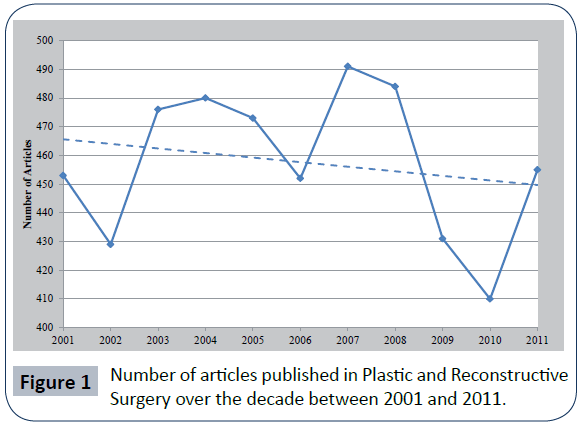
Figure 1: Number of articles published in Plastic and Reconstructive Surgery over the decade between 2001 and 2011.
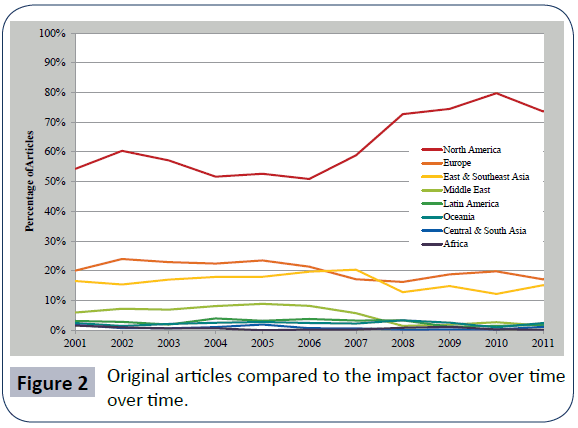
Figure 2: Original articles compared to the impact factor over time over time.
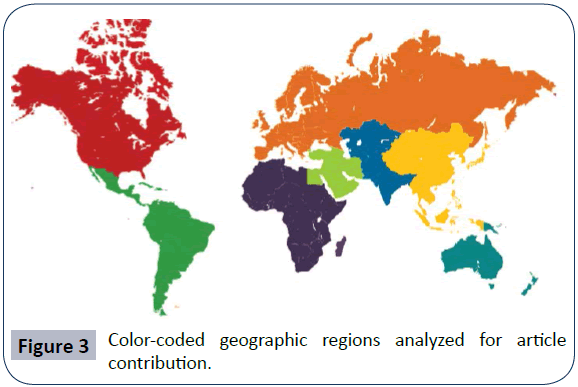
Figure 3: Color-coded geographic regions analyzed for article contribution.
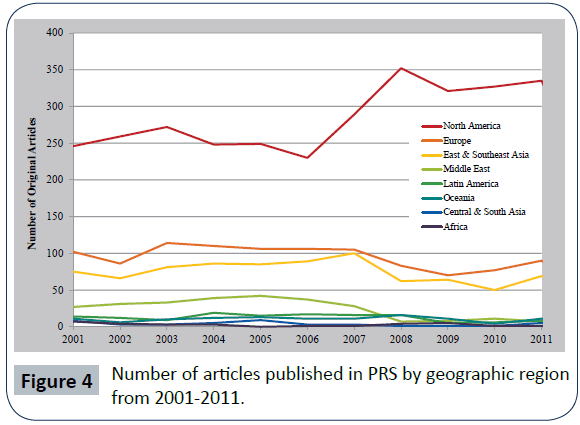
Figure 4: Number of articles published in PRS by geographic region from 2001-2011.
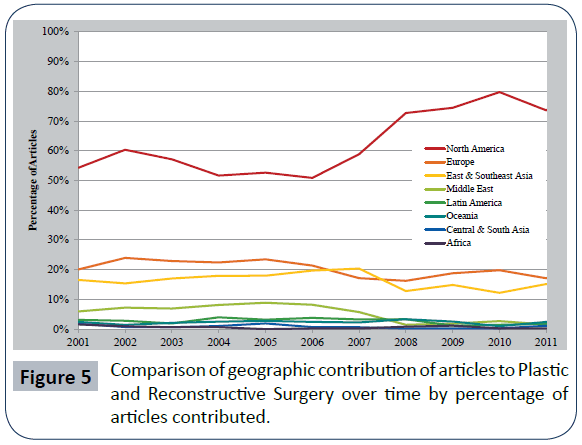
Figure 5: Comparison of geographic contribution of articles to Plastic and Reconstructive Surgery over time by percentage of articles contributed.
In this second analysis, the PRS data from 2003 through 2012 showed the percentage of contributions from the USA and Canada increasing from 62 % in 2003 to 74 % in 2012, while contributions from Europe, East and Southeast Asia remained the same or decreased (Figure 6). In the BJPS/JPRAS, the percentage of European contributors decreased from 68 % to 54 % from 2003-2012 due to a rise in the contribution from both North America and East and Southeast Asia (Figure 7). In the Journal of Aesthetic Surgery the contributions stayed fairly even over the decade with North America contributing the majority of the articles (Figure 8). In the Aesthetic Plastic Surgery, the European percentage of contribution continuously rose from 26 % to 37 % 2004 to 2008 but then oscillated, ending at 30 % in 2012 (Figure 9). Finally, in Annals of Plastic Surgery, a similar trend was seen but with North America holding a rising majority (Figure 10). After compiling the articles from all five journals, North America was the largest contributor and demonstrated a trend of increasing publication rates in both percentage and number of articles published (Figures 11 and 12). Though individual region contributions changed as a percentage, the absolute number of articles from North America, Europe, Oceana, Latin America and East and Southeast Asia increased over our study period (Figure 11). The only contributor showing a declining trend was the Middle East, with other regions remaining fairly stable from 2003-2012 in total number of articles published.

Figure 6: PRS article contributor sources from 2003 through 2012 by percentage.
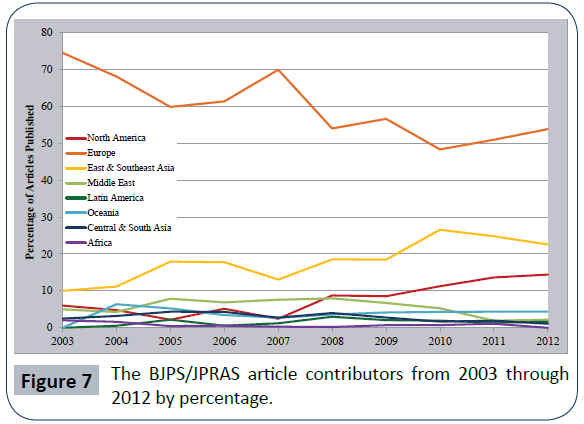
Figure 7: The BJPS/JPRAS article contributors from 2003 through 2012 by percentage.
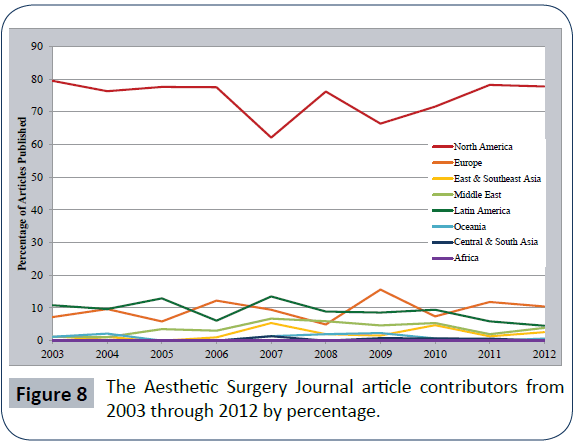
Figure 8: The Aesthetic Surgery Journal article contributors from 2003 through 2012 by percentage.

Figure 9: The Aesthetic Plastic Surgery article contributors from 2003 through 2012 by percentage.
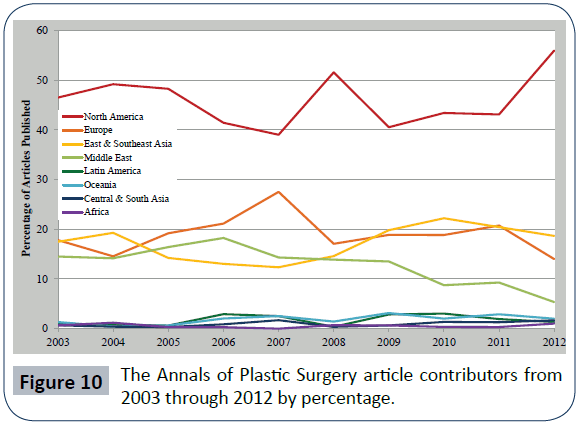
Figure 10: The Annals of Plastic Surgery article contributors from 2003 through 2012 by percentage.

Figure 11: Compilation of articles published in all five journals by article number.
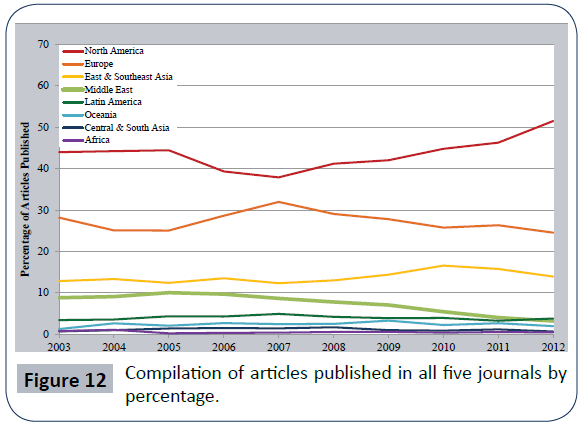
Figure 12: Compilation of articles published in all five journals by percentage.
Finally, the article contribution for 2012 by percentage after standardization by GDPPC is demonstrated in Figure 13. Before standardization, the North American contribution was significantly larger than any others, at just over half, followed by Europe then East and Southeast Asia (Figure 13a). In the pie chart of the standardized contribution percentages, the North American contribution decreased somewhat as other areas—particularly the previously minor contributors—increased in their percentage of contribution (Figure 13b). The exact numerical differences between the countries when standardized demonstrate a decrease in both the North American contribution, from 51.5 % to 33.9 %, and in the contribution from the Oceania region, from 2 % to 1.6 %. In all other regions, the percentage of articles for 2012 increased with standardization (Figure 14), most drastically in Central and South Asia (Table 1).
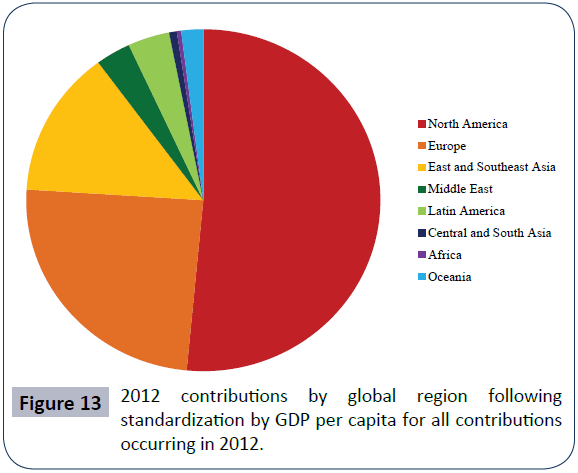
Figure 13: 2012 contributions by global region following standardization by GDP per capita for all contributions occurring in 2012.

Figure 13a: (upper chart) demonstrates the percentage of contributions when unstandardized for GDP per capita.

Figure 14: Accountable care articles demonstrate a trend of increasing since 2000, particularly in the past three years.
In the area of accountable care, an increasing trend was found in the number of primary articles regarding cost, efficiency, evidence-based practice and outcomes since 2000 (Figure 12). The number of accountable care articles in 2012 is more than six times the number of these articles in 2000.
Discussion
The environment of medicine is shifting as geographic borders that historically constrained practice and academics dissolve. There is currently a growing interest and continuing discussion of global surgery, defined as both practice and academic research internationally, particularly in low-income countries. This trend, along with the avid discussion it invokes, emphasizes the need for the growth and improved quality of international academic surgery [14-18]. With the growing interest in global surgery, also no longer confined by previous borders, the stage for plastic surgery research has become increasingly international over the last ten years. Factoring into this changing environment of research is the emphasis placed on accountable care and cost efficiency.
Previous studies reviewing trends looked at compilations of articles at various time points. One study analyzed publications in three plastic surgery journals for 2002 [19]. Another analyzed a cross sectional sample from three journals every eight years, starting in 1972 and ending with 2004 [20]. The trends in both of these studies reflect the data obtained in our study, with North America contributing the majority of articles to the literature, but growth occurring in other contributor sources. The longitudinal analysis of the trends particularly emphasized the increasing number of articles from Asia and Europe.
The increasing globalization observed in this study, though not blatantly obvious at first glance, is reflected subtly in the observed publication trends. Most regions of the world demonstrated trends of steady or increasing numbers of publications over the last decade. The internationalization effect is more evident when the analysis is adjusted to research output with consideration for GDP per capita. When this standardization is performed, we see the trend shift favorably toward international contributions. This observation supports the existence of an economic impact on research, a theory present in many discussions of the geography of literature and research [15,21,22]. We suggest that additional globalization may also be occurring through other media outlets and that contributions are increasingly internationalized through resources such as the Internet. As information technology expands the growth is mirrored by most of the world’s ability to access our specialty’s publications. Though this study extensively covered the top five plastic surgery journals by impact factor, it did not cover contributions to additional journals, such as local or country-specific ones, or to online sources. It is likely that the contribution to the online data pool has demonstrated internationalization over the past decade and will continue the trend over the decades to come, leaving room for future analysis as the publication and source pool broadens.
As for accountable care article trends, the field of plastic surgery is characterized by persistent variability in clinical practice, a trait that fuels an increasing demand for evidence of clinical effectiveness. This area of research aims to improve outcomes, safety, and efficiency. Ultimately, the goal is to mold plastic surgery into the most efficient and effective state possible, a status crucial to survival in the age of accountable care [23-25]. Consequently, a body of evidence regarding safety, effectiveness, appropriate indications, and cost-effectiveness has been developing at an increasing pace in the main plastic surgery journals. In addition to the increase in the number of articles seen in this study, the discussion itself over evidence level and quality improvement has also grown in the plastic surgery literature and encourages further development of higher-evidence level literature [26-30]. The creation of the EBM Special Topic section in the PRS journal in 2010 clearly impacted on the number of evidence-based studies published in our specialty. This movement likely extends to our other specialty publications, mirroring the trend seen in the top five highest impact factor plastic surgery journals.
In medicine there is always room for improvement and growth. This possibility is ubiquitous in every field, extending from clinical practice to academics. The plastic surgery literature indicates that growth is occurring in our field, building up the diversity and evidence-level of our literature. As plastic surgery carries on evolving, adapting, and refining, it is likely that global contribution and evidence-based accountable care publications will continue the trend of increasing and strengthening the body of plastic surgery literature.
Conclusion
An overview is provided of trends in the past ten years of plastic surgery literature in the top five highest impact factor journals. The publications reflect the current changes in the environment of medical research in regards to globalization and to increasing evidence-based management literature. The internationalization of research is reflected in the contributions increasing in number from nearly all geographic regions over the past decade. In addition, the number of articles related to accountable care is on an upward trend. There is room for improvement in both areas of literature growth, however plastic surgery is well on its way and continues to evolve and improve upon on the past.
8765
References
- Maojo V, García-Remesal M, Bielza C, Crespo J, Perez-Rey D, et al. (2012) Biomedical informatics publications: a global perspective: part I: conferences.Methods Inf Med 51: 82-90.
- Pu LL (2012) Commentary: The growing trend of China's contribution to the field of plastic and reconstructive surgery: a 10-year study of the literature.Ann PlastSurg 68: 7-8.
- Sreekar H, Dawre S, Lamba S, Gupta AK (2012) Trend of India's Contribution to the Field of Plastic and Reconstructive Surgery.Ann PlastSurg 69: 223.
- Zhang WJ, Zhang JL, Jiang H (2012) Growing trend of China's contribution to the field of plastic and reconstructive surgery: a 10-year study of the literature.Ann PlastSurg 68: 328-331.
- Evensen AE, Sanson-Fisher R, D'Este C, Fitzgerald M (2010) Trends in publications regarding evidence-practice gaps: a literature review.Implement Sci 5: 11.
- Obremskey WT, Pappas N, Attallah-Wasif E, Tornetta P 3rd, Bhandari M (2005) Level of evidence in orthopaedic journals.J Bone Joint Surg Am 87: 2632-2638.
- Rothoerl RD, Klier J, Woertgen C, Brawanski A (2003) Level of evidence and citation index in current neurosurgical publications.Neurosurg Rev 26: 257-261.
- Wasserman JM, Wynn R, Bash TS, Rosenfeld RM (2006) Levels of evidence in otolaryngology journals.Otolaryngol Head Neck Surg 134: 717-723.
- Lai TY, Leung GM, Wong VW, Lam RF, Cheng AC, et al. (2006) How evidence-based are publications in clinical ophthalmic journals?Invest Ophthalmol Vis Sci 47: 1831-1838.
- Lau SL, Samman N (2007) Levels of evidence and journal impact factor in oral and maxillofacial surgery.Int J Oral MaxillofacSurg 36: 1-5.
- Hanzlik S, Mahabir RC, Baynosa RC, Khiabani KT (2009) Levels of evidence in research published in The Journal of Bone and Joint Surgery (American Volume) over the last thirty years.J Bone Joint Surg Am 91: 425-428.
- Kowalski E, Chung KC (2013) The outcomes movement and evidence-based medicine in plastic surgery.ClinPlastSurg 40: 241-247.
- Finlayson SR (2013) How should academic surgeons respond to enthusiasts of global surgery?Surgery 153: 871-872.
- Calland JF, Petroze RT, Abelson J, Kraus E (2013) Engaging academic surgery in global health: challenges and opportunities in the development of an academic track in global surgery.Surgery 153: 316-320.
- Farmer P, Meara JG (2013) Commentary: The agenda for academic excellence in "global" surgery.Surgery 153: 321-322.
- Tarpley JL (2013) Commentary: An academic track in global surgery.Surgery 153: 322-324.
- Debas HT (2013) Commentary: Academic surgery and global health.Surgery 153: 324-326.
- Huemer GM, Bauer T, Gurunluoglu R, Sakho C, Oehlbauer M, et al. (2004) Analysis of publications in three plastic surgery journals for the year 2002.PlastReconstrSurg 114: 1147-1154.
- Loonen MP, Hage JJ, Kon M (2007) Publications of plastic surgery research 1972 through 2004: a longitudinal trend analysis of three international journals. J PlastReconstrAesthetSurg 60: 934-945.
- Grossi F, Belvedere O, Rosso R (2003) Geography of clinical cancer research publications from 1995 to 1999.Eur J Cancer 39: 106-111.
- Uthman OA, Uthman MB (2007) Geography of Africa biomedical publications: an analysis of 1996-2005 PubMed papers.Int J Health Geogr 6: 46.
- Patel A, Shah A, Singh D, Au A (2013) Protecting plastic surgery under the affordable care act.PlastReconstrSurg 131: 316e-317e.
- Collins JB, Verheyden CN, Mahabir RC (2013) Core measures: implications for plastic surgery.PlastReconstrSurg 131: 1266-1271.
- Ganske I, Abbott MM, Meara J (2011) Accountable care organizations: a primer for surgeons.Bull Am CollSurg 96: 27-35.
- Chuback JE, Varley TL, Yarascavitch BA, Eaves F 3rd, Thoma A, et al. (2013) The level of evidence presented at plastic surgery meetings: what do we have to learn?PlastReconstrSurg 131: 776-783.
- Loiselle F, Mahabir RC, Harrop AR (2008) Levels of evidence in plastic surgery research over 20 years.PlastReconstrSurg 121: 207e-11e.
- Davis Sears E, Burns PB, Chung KC (2007) The outcomes of outcome studies in plastic surgery: a systematic review of 17 years of plastic surgery research. PlastReconstrSurg 120: 2059-2065.
- Chuback JE, Yarascavitch BA, Eaves F 3rd, Thoma A, Bhandari M (2012) Evidence in the aesthetic surgical literature over the past decade: how far have we come?PlastReconstrSurg 129: 126e-134e.
- Xu CC, Côté DW, Chowdhury RH, Morrissey AT, Ansari K (2011) Trends in level of evidence in facial plastic surgery research.PlastReconstrSurg 127: 1499-1504.




















